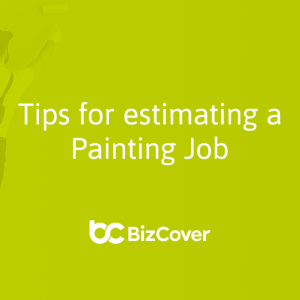From working on a wide range of different projects to high profit margins, there are plenty of reasons to start your own painting business.
But while the positives seem great it will require some careful planning and a solid understanding to break into your local market. There are many things to consider, and it can be overwhelming trying to figure out where to start.
Not to worry.
If you have been thinking of starting up your own small painting business, we’ve got the guide for you. We share some tips and tricks into some of the key things to consider when making your painting business dream into a reality.
1. Ensure you meet licensing requirements
While you may be ready to get on a roll, you may want to consider your local area’s licensing requirements for painters before you get going.
Each jurisdiction across Australia has different painter business license requirements and it’s important you understand what is needed to become a painter.
2. Determine your painting business niche
When you start a painting business, an essential starting point is to identify your niche. From interior and exterior house painting to government projects and even art, there are many types of painting and it’s important you choose something that you are interested in.
What if you aren’t sure which type of painting you would like to specialise in?
It may be beneficial to do some research on the various types of painting companies in your area. This will help limit your choices and give you an idea of the available options. Even talking to people already in the industry could help you understand the business a bit more. It’s also important to choose a niche with potential growth.
3. Create a business plan
No matter what business you are starting, it’s essential to have a business plan in place.
This document will outline your business goals and strategies as well as how you plan on achieving them. From finances to your marketing plan, your business plan will be the blueprint for your success. There are many resources that can help you create a business plan if you don’t know where to begin. You can find the guide from Australia’s government to help you navigate this process.
4. Register your company
Registering your business with the Australian Securities and Investments Commission (ASIC) is one of the first steps you will need to officially start your painting business. This will provide you with an Australian Business Number (ABN) that you can use to open a bank and apply for permits and licenses. Online registration is possible through the ASIC website.
You may also need to register for GST (Goods and Services Tax) and register your business name. These steps are best assisted by a financial adviser who can help guide you through the process.
5. Establish your capital
Like most business ventures, you may need some funding to launch your painting business. These funds can be used to fund marketing and rent space, as well as general operating costs. Different businesses have different capital requirements and will have different expenses.
These are just a few of the places you might look for capital to finance your small business:
- Find out if you are eligible for funding and grants.
- Take into account the financial assistance that investors can provide
- Banks may offer loans
- Personal savings
Again, it is wise to seek the guidance of an accountant if you are unsure which option will best suit your business.
6. Marketing your painting business
Just like there are many ways to paint a wall, there are many ways to market your painting business. The first step of your marketing plan is to sure up the fundamentals. Invest some time and money in creating a catchy logo and perhaps a uniform so potential customers can recognise your painting business.
One of the more modern ways to market a painting business is by establishing an online presence. Creating a website, starting an online blog, or using social media can all help generate leads by reaching markets that you can’t reach with physical advertising.
Still, there is a place for physical marketing materials such as flyers, business cards and advertising if you can afford it. Here are some other ideas of ways you can market your business.
7. Consider getting business insurance
Having painters insurance in place is critical in the world of painting as it provides you with protection for the risks you could face in your day-to-day. Here are three types of insurance for painters that could protect you and your business:
Public Liability insurance*
Public Liability insurance* is designed to protect you and your painting business in the event a customer, supplier or a member of the public is injured or sustains property damage as a result of your negligent business activities.
It is designed to cover a variety of situations such as if you damage your client’s walls or a customer trips over your tools and injures themselves.
Portable Equipment Cover*
From brushes and trays to rollers and overalls, running a painting business requires a lot of equipment. Insuring your portable business assets not only gives you peace of mind but is an investment in protecting your small business for the long run.
Personal Accident and Illness Insurance*
Running a painting business will likely take its toll on your body. It can be tough, physical work. If your work as a painter requires you to be in good physical health, you may want to consider Personal Accident and Illness insurance in case you fall ill or are injured and unable to work.
This important type of insurance can provide cover should you become permanently disabled or pass away as a result of an accident. Cover can also include a weekly benefit for loss of income if you are unable to work as a result of an unexpected injury or illness (even if it occurs outside of your employment).
The bottom line
Starting a small painting business can be an exciting career move, but the experiences will vary from painter to painter. No two painting businesses will face the exact same challenges and it’s important to continue reading and looking for new ways to overcome them so your business can thrive.
Whether you a starting a painting contractor business or a commercial painting business, or even setting up a painting business with no experience, hopefully this guide has given you some ideas so you can succeed for years to come.


